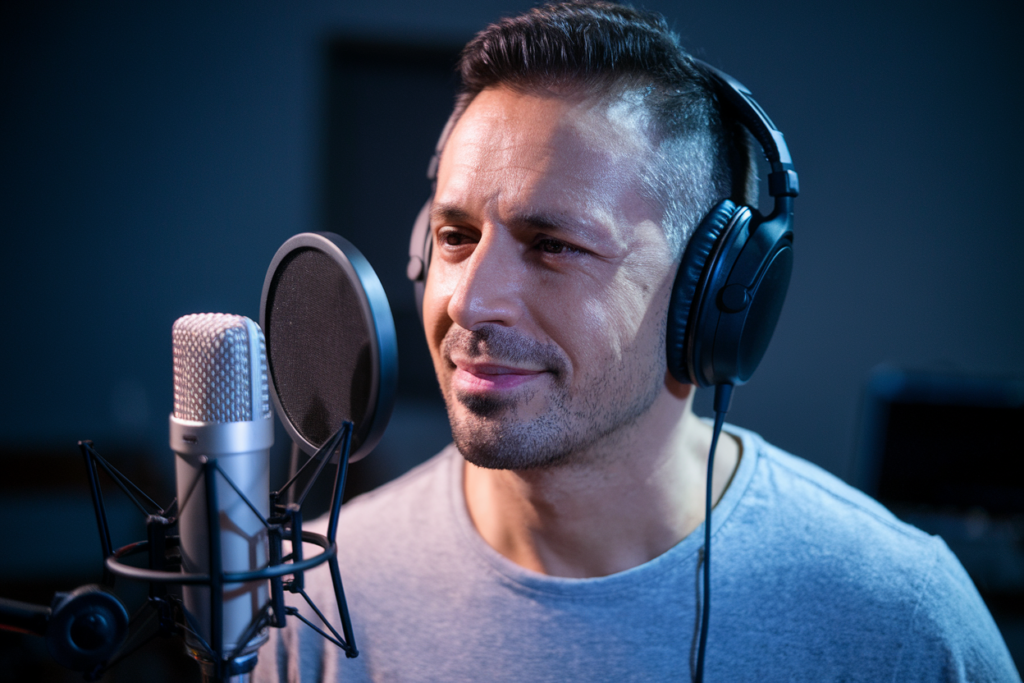Key Takeaways
- Dialect Diversity: Turkish language exhibits significant diversity, with distinct regional dialects offering variations in pronunciation, vocabulary, and grammar.
- Standard vs. Regional Dialects: Istanbul Turkish is the standard form used in media and education, while Anatolian Turkish encompasses numerous regional dialects that reflect local identities.
- Phonetic Differences: Pronunciation varies between the two dialects; Anatolian speakers often pronounce vowels more distinctly and may have different consonant usage compared to Istanbul Turkish.
- Cultural Vocabulary: Istanbul Turkish aligns closely with modern expressions found in urban settings, whereas Anatolian Turkish includes words reflecting local culture, cuisine, and customs.
- Historical Influences: The evolution of both dialects is shaped by historical contexts; Istanbul’s diverse influences contrast with Anatolia’s stronger ties to rural traditions.
- Language Evolution: Understanding these variations enriches communication across Turkey and fosters deeper connections within its cultural tapestry.
Ever wondered what sets Anatolian Turkish apart from Istanbul Turkish? While both dialects share a rich cultural heritage, they each bring unique flavors to the table. If you’re diving into the world of Turkish language and culture, understanding these differences can open up new avenues for communication and connection.
Overview of Turkish Dialects
Turkish dialects exhibit significant diversity across regions, with distinct variations in pronunciation, vocabulary, and grammar. Understanding these dialects enhances your appreciation of the Turkish language and culture.
Major Dialect Groups
- Istanbul Turkish
Istanbul Turkish serves as the standard form of the language, widely used in media and education. It reflects influences from various cultural backgrounds due to Istanbul’s position as a historical melting pot.
- Anatolian Turkish
Anatolian Turkish encompasses numerous regional dialects spoken throughout central Turkey. Each area contributes unique expressions and intonations, making them integral to local identity.
- Aegean Dialects
Aegean dialects showcase distinctive phonetic features influenced by proximity to Greek speakers. These variations highlight the region’s rich history and cultural exchange.
- Black Sea Dialects
Black Sea dialects possess unique melodic qualities due to geographical isolation. This area’s mountainous terrain fosters a sense of community reflected in its linguistic characteristics.
- Eastern Anatolian Dialects
Eastern Anatolian dialects include Kurdish and Arabic influences, resulting in diverse vocabulary that sets them apart from other regions.
- Southern Dialects
Southern dialects reveal traits shaped by Mediterranean cultures, incorporating words from Italian and French into everyday usage.
Understanding these variations not only enriches your grasp of the language but also connects you with the broader fabric of Turkish culture through its multi-faceted expressions.
Key Differences Between Anatolian and Istanbul Turkish
Anatolian Turkish and Istanbul Turkish, while both part of the broader Turkish language family, exhibit distinct features. Understanding these differences enhances your appreciation of Turkey’s linguistic diversity.
Phonetic Variations
Phonetic traits set Anatolian Turkish apart from its Istanbul counterpart. In general, speakers from Anatolia often pronounce certain vowels more distinctly than those in Istanbul. For example, the vowel “a” may sound broader in some Anatolian dialects. Additionally, consonant usage can vary; regional accents might drop or soften specific sounds that are pronounced clearly in Istanbul Turkish. This phonetic divergence reflects cultural influences and historical contexts unique to each region.
Vocabulary Distinctions
Vocabulary also differs between the two forms of Turkish. While Istanbul Turkish aligns closely with standard modern expressions used in media and education, many Anatolian dialects incorporate words reflecting local culture and traditions. You’ll find terms related to local cuisine or customs that aren’t commonly used in urban settings like Istanbul. Furthermore, loanwords from languages such as Kurdish or Arabic appear more frequently in Eastern Anatolian dialects compared to their counterparts in Istanbul.
Recognizing these key differences not only enriches your understanding of the language but also opens doors to deeper connections within various communities throughout Turkey.
Cultural Influences on Language
Cultural influences significantly shape the evolution of Anatolian and Istanbul Turkish. These dialects reflect the rich tapestry of Turkey’s history, traditions, and regional customs.
Historical Context
Turkish language development stems from various historical events. The Ottoman Empire played a crucial role in shaping modern Turkish through cultural exchanges with diverse ethnic groups. As Istanbul became a melting pot of cultures, its Turkish absorbed vocabulary from Arabic, Persian, and even European languages. In contrast, Anatolian Turkish retains stronger ties to local dialects due to its rural roots and fewer external influences over time. This divergence creates unique linguistic features that highlight regional identities.
Regional Variations
Regional variations manifest in both pronunciation and vocabulary across Turkey. For instance, speakers in eastern Anatolia often utilize distinct vowel sounds compared to those in Istanbul. Additionally, some words common in Anatolian dialects may not appear in standard Istanbul Turkish or might hold different meanings altogether. Such differences enrich the overall communication landscape within Turkey, allowing for greater expression of local identity while maintaining a shared linguistic foundation.
Understanding these cultural influences enhances your appreciation of Turkish language diversity and promotes effective communication across various regions.
Language Evolution and Modern Usage
The evolution of Anatolian and Istanbul Turkish reflects Turkey’s rich cultural tapestry. Each dialect carries historical significance, shaped by regional influences and societal changes.
Istanbul Turkish serves as the modern standard, often used in media and education. It’s characterized by a more uniform pronunciation and vocabulary that aligns with contemporary expressions. You’ll find this dialect prevalent in television shows, movies, and news broadcasts. Its development stems from urbanization, which encouraged linguistic standardization.
Anatolian Turkish showcases a diverse array of regional dialects, each with unique characteristics influenced by local customs and languages. This variation results in distinct pronunciations; for instance, vowel sounds differ significantly across regions. Rural communities tend to preserve older expressions, enriching their lexicon with terms borrowed from Kurdish or Arabic.
Cultural exchanges during the Ottoman Empire introduced numerous loanwords into Istanbul Turkish from Arabic, Persian, and European languages. This enriched vocabulary provides depth but can create barriers in communication between speakers of different dialects.
In contrast, Anatolian Turkish maintains stronger ties to local traditions due to its rural roots. You might encounter words that hold specific meanings within particular contexts or regions not recognized in Istanbul Turkish.
Understanding these nuances enhances your appreciation for the diversity within the Turkish language landscape. By acknowledging both dialects’ evolution and unique features, you engage more effectively with speakers from various backgrounds while fostering better connections through language comprehension.
Conclusion
Understanding the differences between Anatolian and Istanbul Turkish opens up a richer perspective on Turkey’s linguistic landscape. Each dialect reflects unique regional identities that contribute to the broader cultural tapestry of the nation. By recognizing these distinctions, you can enhance your communication skills and deepen your appreciation for Turkey’s diverse heritage.
Whether you’re learning Turkish or engaging with native speakers, embracing these dialectal variations will help you connect more authentically with local customs and traditions. Ultimately, this knowledge not only enriches your language experience but also fosters meaningful relationships within Turkey’s vibrant communities.
Frequently Asked Questions
What are the main differences between Anatolian Turkish and Istanbul Turkish?
Anatolian Turkish and Istanbul Turkish differ in phonetics, vocabulary, and regional influences. Istanbul Turkish is standardized and widely used in media, while Anatolian Turkish reflects local dialects with varied pronunciations and unique terms influenced by languages like Kurdish and Arabic.
Why is it important to recognize these differences?
Recognizing the differences enhances understanding of the Turkish language and culture. It fosters better communication and connections among speakers from diverse backgrounds, helping bridge cultural gaps.
How do cultural influences shape these dialects?
Cultural influences reflect Turkey’s rich history. The Ottoman Empire facilitated exchanges that enriched Istanbul Turkish with loanwords from Arabic, Persian, and European languages. In contrast, Anatolian Turkish retains stronger ties to local customs due to its rural roots.
What are some major dialect groups in Turkey?
Major dialect groups include Istanbul Turkish (the standard form), Anatolian Turkish (with numerous regional variations), Aegean dialects (influenced by Greek), Black Sea dialects (known for melodic qualities), Eastern Anatolian dialects (featuring Kurdish/Arabic influences), and Southern dialects shaped by Mediterranean cultures.
How has urbanization affected the evolution of these dialects?
Urbanization has led to the standardization of Istanbul Turkish, promoting uniform pronunciation prevalent in media and education. Conversely, this trend has resulted in a richer variety within Anatolian Turkish as it continues to showcase diverse regional characteristics influenced by local customs.







